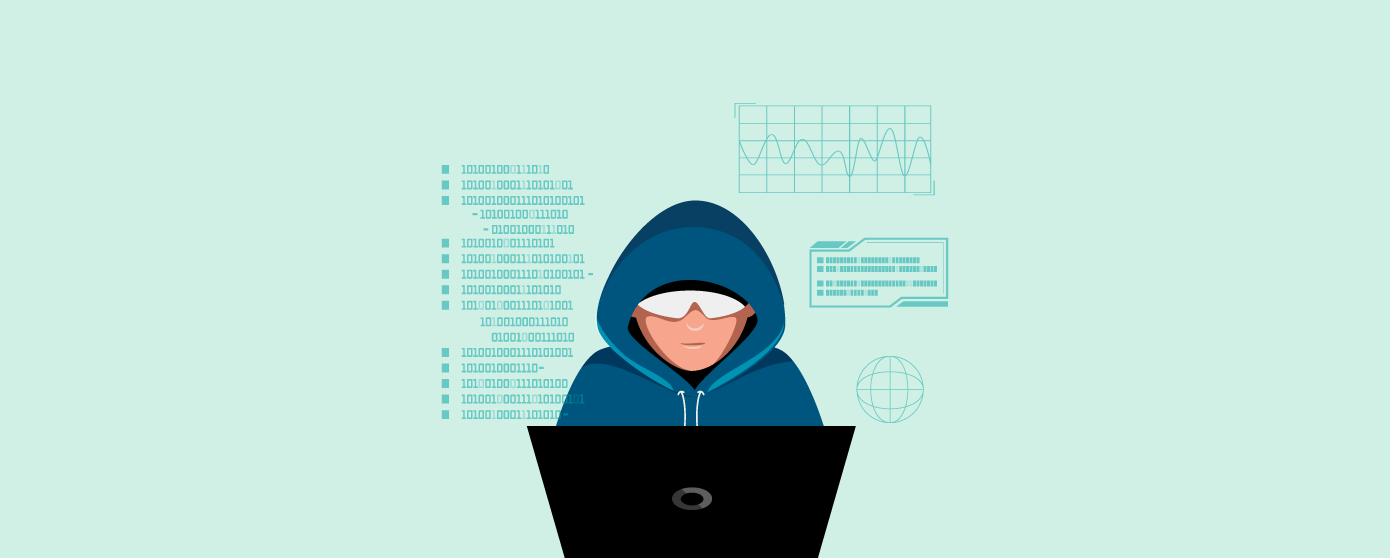We witnessed an unprecedented surge in cyberattacks, as highlighted within the newest State of Software Safety 2025 Annual Report.
AppTrana WAAP blocked over 7.7 billion assaults throughout web sites and APIs below its safety.
Each web site is in danger, no matter whether or not it’s a easy weblog, a portfolio showcase, a small cupcake enterprise, or a dynamic e-commerce platform.
Why would somebody hack my web site? How do web sites get hacked?
Watch this temporary video to learn the way web sites get hacked. Then, learn on as this text supplies detailed solutions to those questions and shares efficient methods to guard your web site.
Why Are Hackers Attacking Web sites?

Attackers are continuously crawling and snooping round web sites to establish vulnerabilities to infiltrate the web site and do their bidding. Whereas a monetary motive drives many web site hacks, there are a number of different the reason why web sites get hacked. Listed here are the hacker’s motivations:
Monetary Beneficial properties
Information means that 86% are motivated by cash! Hackers could make substantial sums of cash by hacking even web sites belonging to small, localized companies. How?
- Misusing information – Hackers may acquire entry to delicate person information by way of phishing and social engineering assaults, malware, brute pressure assaults, and so forth. Utilizing the stolen information, they might have interaction in monetary fraud, identification theft, impersonation, and many others., to switch cash from the customers’ financial institution accounts, apply for loans with the stolen credentials, file for federal advantages, create scams by way of faux social media accounts, and so forth.
- Promoting information on the darkish net – Information is the brand new oil, and hackers stand to make large quantities of cash by promoting person/ enterprise information on the darkish net. Cybercriminals buy and leverage stolen information to orchestrate scams, identification thefts, monetary fraud, and many others. Scammers buy such information to craft personalised phishing messages or extremely focused advert fraud.
- search engine marketing Spam – Spamdexing or search engine marketing Spam is a extremely worthwhile methodology utilized by hackers to cut back the search engine marketing rankings of an internet site and reroute reputable customers to spam web sites. That is finished by injecting backlinks and spam into the person enter fields on the web site. By redirecting customers to spam web sites, the hackers may steal information, acquire entry to bank card data by way of illegitimate purchases, and many others.
- Spreading Malware – Hackers typically hack web sites to unfold malware, together with adware and ransomware, to web site guests. They might be spreading malware for their very own profit (blackmail corporations to pay a ransom, promoting patented data, and many others.) or for different cybercriminals, opponents, and even nation-states. In both case, they make giant sums of cash.
Disruption of Companies
By means of web site hacking, attackers might wish to render an internet site ineffective or unavailable to reputable customers. DDoS assaults are the most effective instance of service disruption by attackers.
Hackers may use this as a smokescreen for different unlawful actions (stealing data, modifying web sites, vandalism, cash extortion, and many others.) or just shut down the web site or reroute net site visitors to competitor/ spam web sites.
Company Espionage
Some corporations rent hackers to steal confidential data (enterprise/ person information, commerce secrets and techniques, pricing data, and many others.) from opponents. In addition they leverage web site hacking to launch assaults on focused web sites. They may leak confidential data or make the web site unavailable, damaging the competitor’s fame.
Hacktivism
In some instances, hackers usually are not motivated by cash. They merely wish to make some extent – social, financial, political, non secular, or moral. They leverage web site defacements, ransomware, DDoS assaults, leaking confidential data, and many others.
State-Sponsored Assaults
Usually, nation-states rent hackers to orchestrate political espionage or cyber warfare on rival nation-states, political opponents, and many others. Internet hacking is used for all the things from stealing labeled data to inflicting political unrest and manipulating elections.
Private Causes
Hackers may additionally have interaction in hacking for their very own amusement, private revenge, simply proving some extent, or plain boredom.
How Do Web sites Get Hacked?

Weak/ Damaged Entry Controls
Entry management refers to authorization, authentication, and person privileges to the web site, servers, internet hosting panel, social media boards, programs, community, and many others. Through entry management, you possibly can outline who will get entry to your web site, its numerous parts, information, and belongings, and the way a lot management and privilege they’re entitled to.
To bypass authentication and authorization, hackers typically resort to brute-force assaults. These embody guessing usernames and passwords, using generic password mixtures, using password generator instruments, and resorting to social engineering or phishing emails and hyperlinks.
The web sites at a better threat of such hacks are ones that:
- Should not have a robust coverage and provisioning course of about person privileges and authorizations
- Don’t implement sturdy passwords
- Don’t implement a two-factor/ multi-factor authentication coverage
- Don’t commonly change passwords, particularly after an worker has left the group
- Don’t require HTTPS connections
Listed here are 7 habits to safe your web sites
Analyzing Open-Supply Internet Growth Parts for Flaws/ Misconfigurations
There’s an ever-increasing reliance on open-source code, frameworks, plugins, libraries, themes, and so forth in as we speak’s net growth apply, the place builders demand velocity, agility, and cost-effectiveness. And, Node.js has grow to be a go-to expertise on this context.
Regardless of the velocity and cost-effectiveness they infuse in net growth, they’re a wealthy supply of vulnerabilities attackers can exploit to orchestrate hacking makes an attempt.
Usually, open-source code, themes, frameworks, plugins, and many others., are likely to get deserted or not be maintained by builders. This implies no updates or patches, and these outdated/ unpatched parts on the web site that proceed to make use of them solely exacerbate the related dangers.
For instance, within the context of Node.js programming, there exists a vulnerability referred to as CWE-208 or timing assaults, which may expose data. This flaw permits malicious people to listen in on community site visitors and acquire entry to confidential information transmitted throughout the community. Here’s a detailed weblog on the way to safe NodeJS API.
Hackers spend way more time, effort, and sources analyzing code, libraries, and themes for vulnerabilities and safety misconfigurations. They attempt to unearth legacy parts and outdated software program variations, supply code from high-risk web sites, situations the place plugins/ parts are disabled as a substitute of being faraway from the server together with all its information, and many others., that present entry factors to orchestrate assaults.
Figuring out Server-Facet Vulnerabilities
A vulnerability is a weak point or lack of correct protection that an attacker can exploit to get unauthorized entry or carry out unauthorized actions. Attackers can run code, set up malware, and steal or modify information by exploiting vulnerabilities.
Hackers spend immense quantities of effort and time to find out the web-server sorts, web-server software program, server working system, and many others., by way of the examination of things similar to:
- IP area
- Common Intelligence (listening on social media, tech websites, and many others.)
- Session cookie names
- The supply code used on net pages
- Server setup safety
- Different parts of backend expertise
Having decided and assessed the backend expertise of your web site, the hackers use numerous instruments and methods to establish and exploit vulnerabilities and safety misconfigurations.
For example, port scanning instruments are utilized by hackers to establish open ports that function gateways to the server and, thereon, server-side vulnerabilities. Some scanning instruments unearth administrative apps protected by weak or no passwords.
Figuring out Consumer-Facet Vulnerabilities
Hackers establish identified vulnerabilities on the shopper facet, similar to SQL Injection vulnerabilities, XSS vulnerabilities, CSRF vulnerabilities, and so forth, that permit them to orchestrate hacks from the shopper facet.
Hackers additionally expend ample effort and time to unearth enterprise logic flaws, similar to safety design flaws, enforcement of enterprise logic in transactions and workflows, and many others., to hack web sites from the shopper facet.
In search of API Vulnerabilities
Most web sites as we speak use APIs to speak with the backend programs. Exploiting API vulnerabilities allow hackers to get deep insights into the inner structure of your web site. Indicators of API safety misconfigurations embody:
- Poor credentials
- Damaged/ weak entry controls
- Accessibility of tokens from question strings, variables, and many others.
- Insufficient validation
- Little or no encryption
- Enterprise logic flaws
To achieve these insights, hackers intentionally ship invalid parameters, unlawful requests, and many others., to the APIs and study the error messages that return. These error messages might include important details about the system, similar to database sort, configurations, and many others., which the hacker can piece collectively over time and exploit recognized vulnerabilities later. That is how web sites are hacked in a rising variety of instances as we speak.
Study extra in regards to the API-based vulnerability recognized by OWASP API Prime 10.
Shared Internet hosting
When your web site is hosted on a platform with tons of of different web sites, the danger of being hacked is excessive, even when one of many web sites has a important vulnerability. Getting an inventory of net servers hosted at a selected IP deal with is straightforward, and it’s only a matter of discovering the vulnerability to take advantage of. The danger heightens additional in case your web site just isn’t secured proper from the event stage.
Irrespective of how web sites are hacked, it brings reputational harm, buyer attrition, lack of belief, and authorized penalties to organizations.
How one can Shield Web site from Hackers?
At all times On Scanning
Asking your builders to search for these vulnerabilities will take days. Even when they get time to level out points, how would they know of zero-day points? Are they actually following the record of a dozen severe and not-so-serious points printed day by day? Or do you’ve an inside safety analysis group?
With always-on scanning, you get experiences on discovered vulnerabilities, which might be handed on to the appliance builders for patching.
An evaluation course of should continuously hold monitor of generally exploited and new zero-day vulnerabilities introduced by distributors and examine for a similar in your web site’s expertise stack.
An clever and holistic net utility scanner lets you constantly and successfully establish vulnerabilities, gaps, and misconfigurations.
Get Web site Penetration Testing
Companies dealing with huge information think about enterprise logic flaws particular to an utility. Solely a safety knowledgeable can check and counsel mitigation steps for this flaw.
Everytime you make main adjustments to an utility, request web site penetration testing with a licensed knowledgeable.
Sync Testing and Patching
Wouldn’t or not it’s nice in the event you mounted safety holes the identical day they had been discovered?
However everyone knows how that plan goes.
Loaded lists builders, useful resource constraints, dependency on third social gathering distributors to launch patches and ever-changing utility code are just some the reason why fixing a vulnerability takes about 200 days. IF and AFTER they’re discovered within the first place. Stopping hackers from accessing your web site will get troublesome.
In fact, you can’t cease all the things else and work on making the proper functions. How about blocking hackers till safety points are mounted?
Get an utility safety resolution with steady scanning and WAF providing.
Indusface AppTrana performs vulnerability scanning, highlighting important weaknesses, whereas permitting safety groups to nearly patch these recognized vulnerabilities.
Combine WAAP into CI/CD Pipeline
The mixing of a WAAP platform into the CI/CD pipeline empowers growth groups with real-time visibility into potential safety points, enabling swift remediation in staging and manufacturing environments.
Furthermore, by leveraging WAAP, growth groups can constantly be taught from detected vulnerabilities and safety incidents. It drives the evolution of coding practices and strengthens web site safety.
Put together for DDoS Battles
Software layer DDoS is among the greatest challenges for companies internationally. Is your small business ready for it? There isn’t a absolute safety in opposition to the assault aside from monitoring incoming utility site visitors to establish purple flags.
Introduce charge limits at numerous ranges, similar to community, server, and utility layers, to limit the variety of requests or connections allowed from a single supply or IP deal with. This helps stop overwhelming your sources throughout a DDoS assault.
Cease Spam
Spam filtering programs, similar to CAPTCHA, might help distinguish between real customers and automatic bots, lowering the potential for malicious actions.
Common monitoring of web site site visitors and analyzing patterns can assist in figuring out zombie bot site visitors. When detected, instant motion needs to be taken to dam and blacklist these malicious sources. As soon as the zombie bot site visitors is recognized, guarantee that you’ve got a immediate response in blocking it.
These proactive approaches considerably cut back the probabilities of profitable hacking makes an attempt and improve total web site safety.
Keep tuned for extra related and fascinating safety articles. Comply with Indusface on Fb, Twitter, and LinkedIn.



